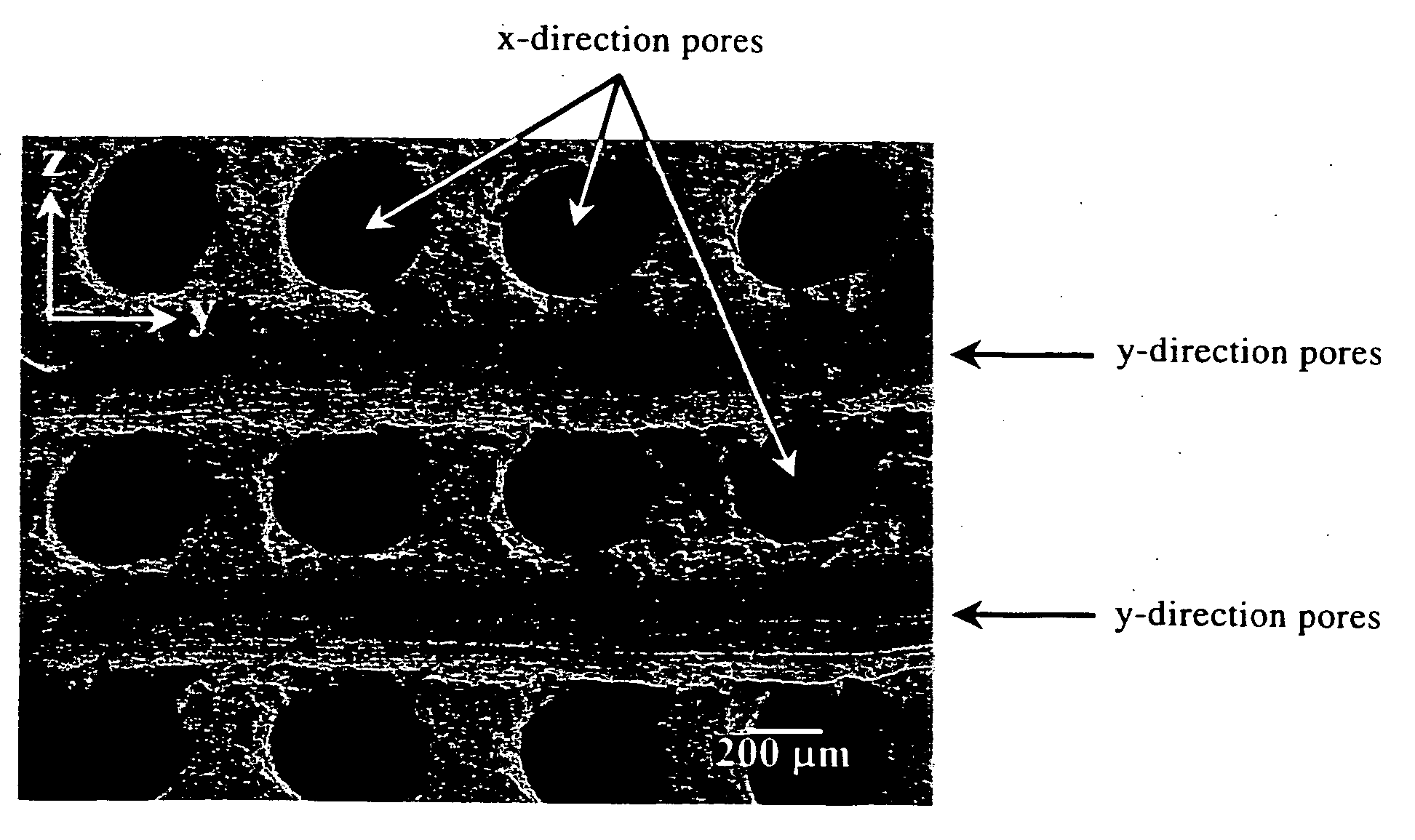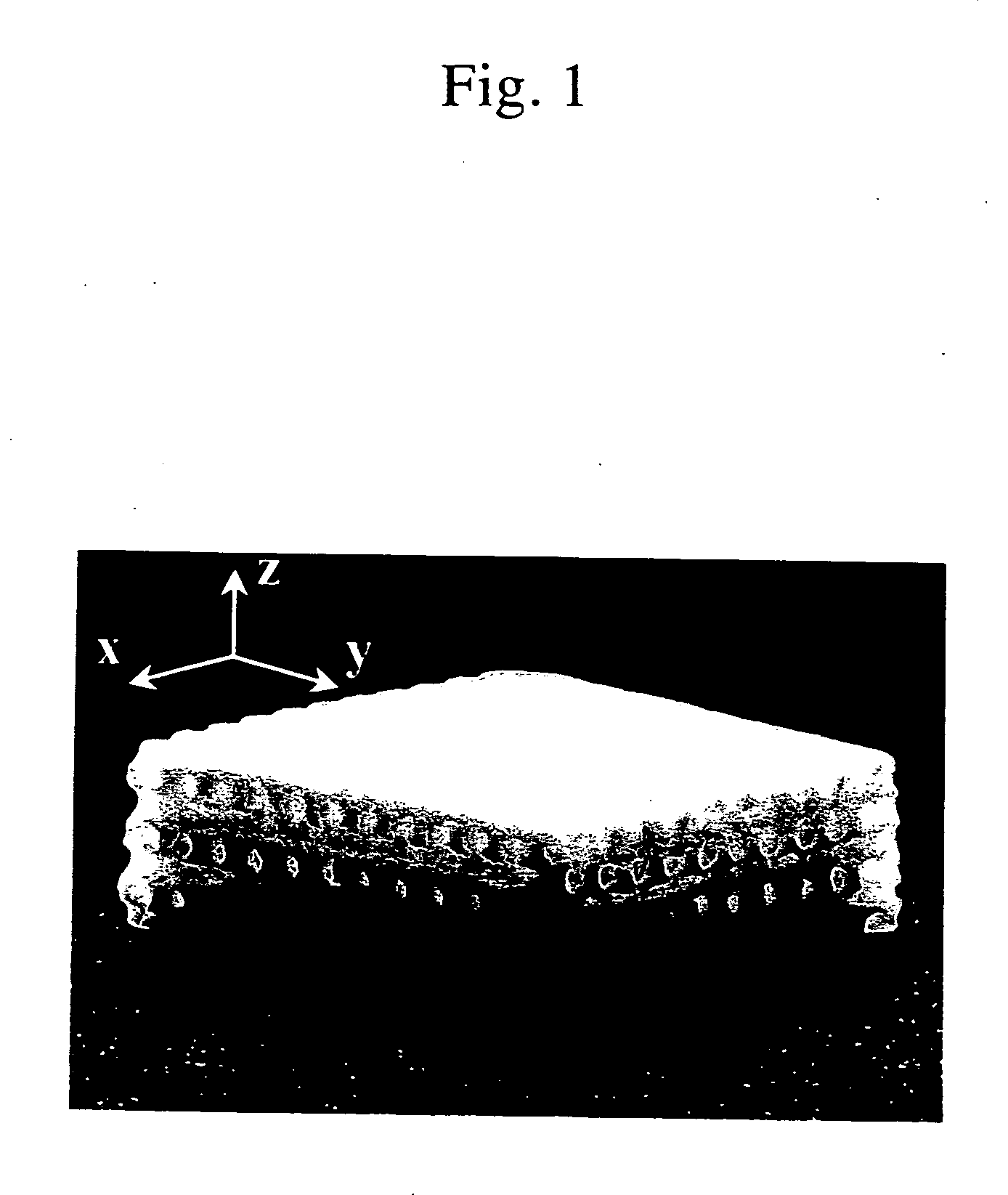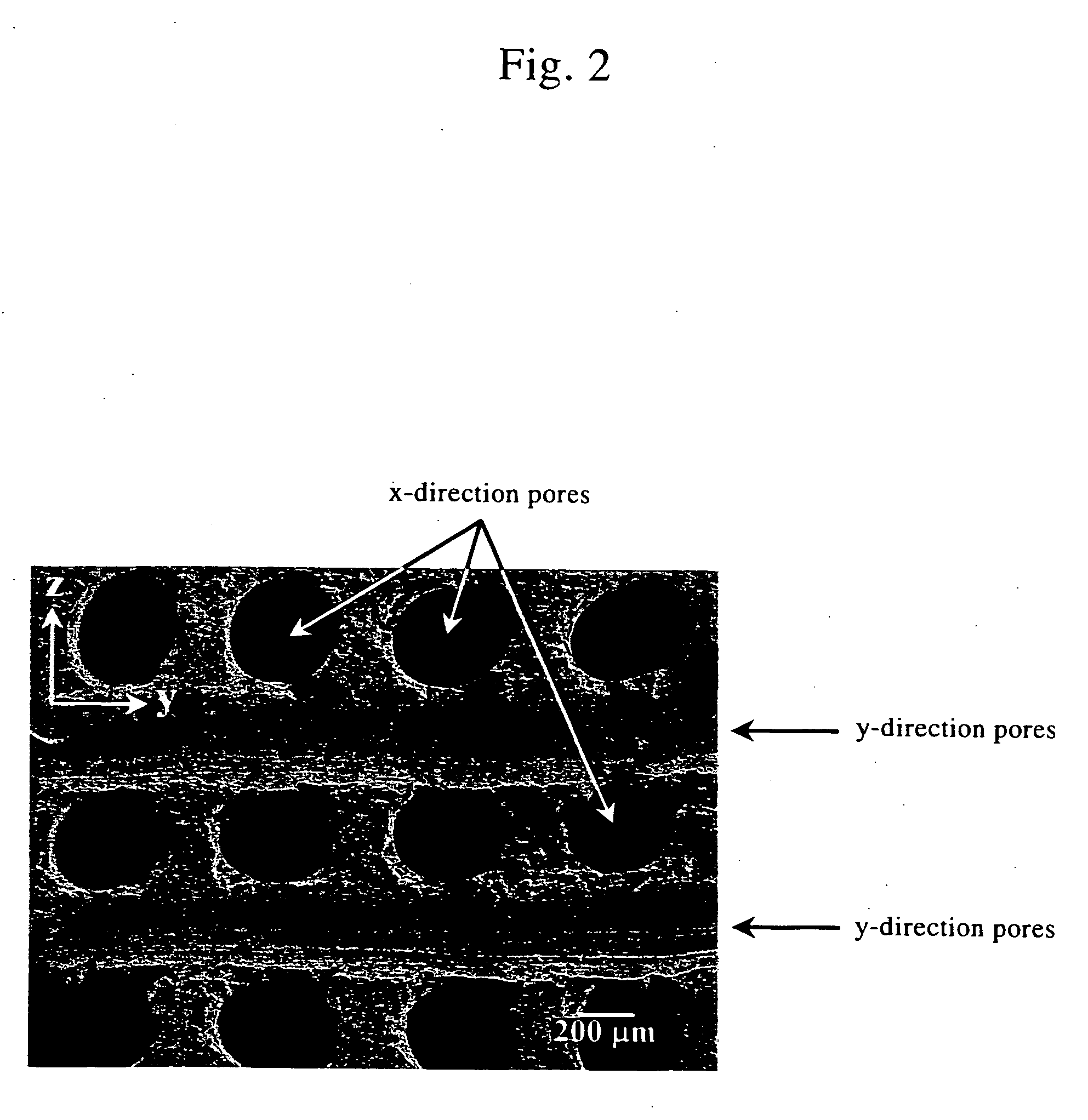Porous article of sintered calclium phosphate, process for producing the same and artificial bone and histomorphological scaffold using the same
- Summary
- Abstract
- Description
- Claims
- Application Information
AI Technical Summary
Benefits of technology
Problems solved by technology
Method used
Image
Examples
example 1
[0038] After weighing out 0.175 g of hydroxyapatite powder (Ca10O(PO4)6(OH)2: Ca / P molar ratio 1.67) under 75 μm in particle size to which 3% polyvinyl alcohol had been added, 65 microliter of ultra pure water was added to and mixed with the powder. Thirteen long columnar stainless steel male dies 0.5 mm in diameter 28 mm in length were arranged parallel to each other at intervals of 0.3 mm, and 14 long columnar stainless steel male dies of the same size as above were arranged on the above male dies at right angles with the same. The above long columnar male die arrangement was packed with the above powder mixture and pressurized at 36 MPa. After the pressurization, powder that coated the long columnar male dies was removed with a plastic scraper. The above operation was repeated 4 times. After the compression molding, all the long columnar male dies were drawn out to form pores in the compression molded product. The compression molded product was dried for 2 days at room temperatur...
example 2
[0039] After weighing out 0.175 g of hydroxyapatite (Ca10(PO4)6(OH)2: Ca / P molar ratio 1.67) powder under 75 μm in particle size to which 3% polyvinyl alcohol had been added, 65 microliter of ultra pure water was added to and mixed with the powder. Thirteen long columnar bamboo or polystyrene male dies 0.5 mm in diameter 30 mm in length were arranged parallel to each other at intervals of 0.3 mm, and 14 long columnar bamboo or polystyrene dies of the same size as above were arranged on the above male dies at right angles. The above long columnar male die arrangement was packed with the above powder mixture and pressurized at 36 MPa. After the pressurization, powder that coated the long columnar male dies was removed with a plastic scraper. The above operation was repeated 4 times. After the compression molding, the compression molded product was dried for 2 days and then sintered for 5 hours at 1170° C. to give a porous sintered compact. Both the long columnar bamboo male dies and t...
example 3
[0040] After weighing out 0.175 g of each of different kinds of calcium phosphate precursor powders, different in Ca / P molar ratio, under 75 μm in particle size to which 3% polyvinyl alcohol had been added, 40 to 65 microliter of ultra pure water was added to and mixed with each precursor powder. Thirteen long columnar stainless steel male dies 0.5 mm in diameter 28 mm in length are arranged parallel to each other at intervals of 0.3 mm, and 14 long columnar stainless steel male dies of the same size as above are arranged on the above male dies at right angles with the same. The above long columnar male die arrangement was packed with the above powder mixture and pressurized at 36 MPa. After the pressurization, powder that coated the long columnar male dies was removed with a plastic scraper. The above operation was repeated 4 times. After the compression molding, all the long columnar male dies were drawn out to form pores. The compression molded product was dried for 2 days at roo...
PUM
| Property | Measurement | Unit |
|---|---|---|
| Temperature | aaaaa | aaaaa |
| Temperature | aaaaa | aaaaa |
| Temperature | aaaaa | aaaaa |
Abstract
Description
Claims
Application Information
 Login to View More
Login to View More - R&D
- Intellectual Property
- Life Sciences
- Materials
- Tech Scout
- Unparalleled Data Quality
- Higher Quality Content
- 60% Fewer Hallucinations
Browse by: Latest US Patents, China's latest patents, Technical Efficacy Thesaurus, Application Domain, Technology Topic, Popular Technical Reports.
© 2025 PatSnap. All rights reserved.Legal|Privacy policy|Modern Slavery Act Transparency Statement|Sitemap|About US| Contact US: help@patsnap.com



